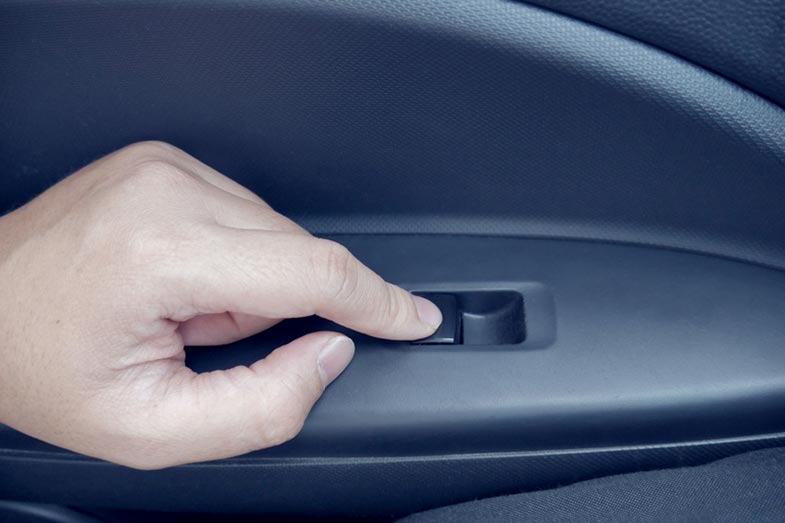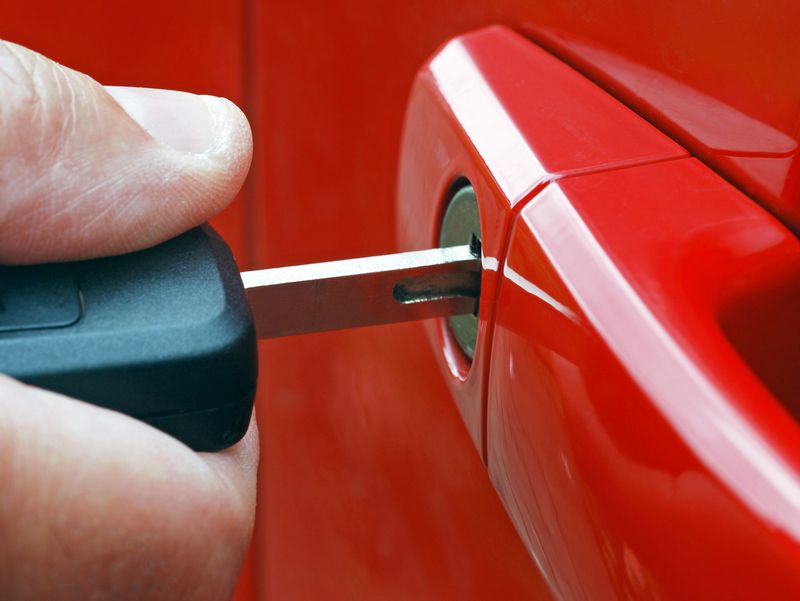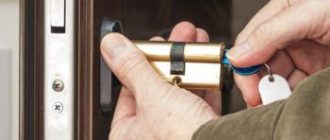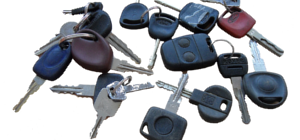
Common car lock issues
Dealing with car lock issues can be frustrating and inconvenient. Whether you’re unable to unlock your car or your key gets stuck in the ignition, these problems can disrupt your daily routine. Understanding common lock issues and how to fix them can save you time and money.
One of the most common car lock issues is a faulty mechanism. This can prevent you from locking or unlocking your car’s doors, leaving your vehicle vulnerable to theft. If you encounter this problem, it’s important to check the entire locking mechanism for any obstructions or damages. Additionally, applying lubricant to the lock can help to resolve the issue.
Another common car lock issue is when the key gets stuck in the ignition. This can happen due to a variety of reasons, such as a worn-out key or a faulty ignition switch. To address this problem, try wiggling the steering wheel while gently turning the key. If this doesn’t work, it may be necessary to call a professional locksmith to safely remove the key.
Overall, understanding and addressing common car lock issues promptly can save you from unnecessary stress and expenses. Whether it’s a faulty lock mechanism or a stuck key, taking proactive measures can ensure that your car remains secure and operational.
Broken Car Locks: How to Repair Them
Car lock issues can be frustrating and inconvenient, especially if you are unable to unlock or lock your car doors with your key. There are several common issues that can cause a car lock to malfunction, including a worn or damaged key, a faulty lock mechanism, or a problem with the door latch. Here are some tips and solutions to help you repair your broken car locks.
| Key doesn’t turn in the lock | Try lubricating the lock mechanism with graphite or silicone spray. If that doesn’t work, you may need to have your key re-cut or replace the lock cylinder. |
| Key is difficult to insert or remove | Apply a small amount of graphite or silicone spray to the key and insert it into the lock. Gently turn the key back and forth to distribute the lubricant. If the problem persists, you may need to have the door latch or lock mechanism repaired. |
| Lock won’t unlock or lock | Check if there is any debris or dirt stuck in the lock mechanism. Use compressed air or a small brush to clean it out. If that doesn’t solve the issue, you may need to replace the lock mechanism. |
| Remote keyless entry doesn’t work | Replace the battery in your remote key fob. If that doesn’t work, you may need to reprogram the remote or have it replaced. |
| Door handle is loose or broken | Inspect the door handle for any damage or loose screws. Tighten or replace screws as necessary. If the handle is broken, you may need to replace it. |
If you are unable to fix your car lock issues on your own, it is recommended to seek the help of a professional locksmith or car mechanic. They will have the necessary tools and expertise to diagnose and repair the problem effectively.
Remember to regularly maintain your car locks by keeping them clean and lubricated to prevent future issues. Taking proper care of your car locks can help prolong their lifespan and ensure smooth operation.
Key Stuck in Car Lock: Troubleshooting and Fixes
One of the common car lock issues that many drivers encounter is getting their key stuck in the lock. This can be frustrating and inconvenient, especially when you are in a hurry to unlock or start your car. Fortunately, there are some troubleshooting steps and fixes you can try to resolve this problem.
The first step in troubleshooting a key stuck in a car lock is to ensure that the key is inserted correctly. Sometimes, the key may not be fully inserted or aligned properly with the lock mechanism, causing it to get stuck. Gently wiggle the key while applying slight pressure to see if it will unlock the mechanism.
If wiggling the key doesn’t work, try lubricating the lock mechanism. Over time, dirt and debris can accumulate in the lock, causing it to become sticky. You can use a graphite lubricant or silicone spray to lubricate the lock. Apply a small amount of lubricant into the keyhole and then try turning the key again.
In some cases, the issue may be with the ignition cylinder itself. The ignition cylinder is the part of the lock where the key is inserted to start the car. If the ignition cylinder is worn or damaged, it can cause the key to get stuck. In this case, you may need to replace the ignition cylinder to resolve the issue.
If none of these troubleshooting steps work, it is recommended to seek assistance from a professional locksmith or your car’s dealership. They have the expertise and tools to handle more complex lock issues and can help you safely remove the key from the lock without causing damage to your car.
| Dirt and debris in the lock | Try lubricating the lock mechanism |
| Worn or damaged ignition cylinder | Consider replacing the ignition cylinder |
| Key not inserted or aligned properly | Try wiggling the key while applying slight pressure |
Remember to always handle car lock issues with caution and avoid using excessive force. If you are unsure or uncomfortable with troubleshooting the problem yourself, it is best to seek professional help to avoid causing additional damage to your vehicle.
Car Lock Frozen: Steps to Unfreeze It
In cold weather conditions, car lock freezing is a common issue that car owners often face. When the lock gets frozen, it becomes difficult to unlock or lock the car, making it inconvenient and frustrating. However, there are steps you can take to unfreeze the car lock and get back on the road.
1. Use a De-Icer Spray: A de-icer spray can be an effective solution to quickly unfreeze the lock. Spray the de-icer directly into the lock mechanism and wait a few seconds. Then, try inserting the key and gently wiggle it to unlock the car.
2. Apply Heat: If you don’t have a de-icer spray, you can use a hairdryer or a portable heat source to melt the ice in the lock. Hold the heat source close to the lock for a few minutes, being careful not to overheat the mechanism. Once the ice melts, try unlocking the car using the key.
3. Use a Lubricant: Applying a lubricant can help prevent the lock from freezing in the first place, but it can also be used to unfreeze a lock. Spray a small amount of lubricant into the lock mechanism and try inserting the key to unlock the car. The lubricant will help loosen the frozen components and allow the key to turn smoothly.
4. Use a Key-Warming Method: If the car key itself is frozen, try warming it up before inserting it into the lock. You can do this by using a lighter or a match to heat the key gently. Once the key is warmed up, insert it into the lock and try unlocking the car.
Note: It’s essential to never force the key or the lock, as this can cause damage to the mechanism. If these steps don’t work, it’s recommended to seek professional assistance to avoid further issues with the car lock or ignition.
By following these steps, you can address the common issue of a frozen car lock and get your car back up and running smoothly.
Car Alarm Not Working: Common Causes and Solutions
Car alarm systems are designed to protect your vehicle from theft or break-ins by sounding an alarm when someone attempts to enter or tamper with the car. However, there are times when the car alarm may not work as expected. Here are some common causes and solutions to fix a car alarm that is not working:
- Dead battery: One of the common causes of a non-functioning car alarm is a dead battery. Make sure that the car’s battery is fully charged and replace it if necessary.
- Disconnected wiring: Another common issue is disconnected wiring. Check for any loose or disconnected wires in the car alarm system and reconnect them securely.
- Faulty sensors: Faulty sensors can also cause the car alarm to malfunction. Test the sensors to ensure they are working properly, and replace any faulty ones.
- Deactivated system: Sometimes, the car alarm system may have been deactivated accidentally. Consult the manual to reactivate the system or seek professional help.
- Keyless entry remote issues: If your car alarm is not working, it could be due to issues with the keyless entry remote. Replace the battery or reprogram the remote if necessary.
- Faulty ignition switch: A faulty ignition switch can interfere with the car alarm system and cause it to malfunction. Have the ignition switch checked and repaired by a professional if needed.
- Interference from other devices: Electronic devices such as cell phones or garage door openers can sometimes interfere with the car alarm system. Keep these devices away from the car when trying to activate the alarm.
If you have tried the above solutions and your car alarm is still not working, it is recommended to consult a professional car technician for further inspection and repair.
Car Lock Out: What to Do if You’re Locked Out
Getting locked out of your car is a common and frustrating experience that many car owners have encountered. Whether you’ve left your keys inside, lost them, or the lock mechanism is malfunctioning, being locked out of your car can be a stressful situation. However, there are a few things you can try to unlock your car and get back on the road.
If you realize you’re locked out and your car is still running, try using a spare key if you have one. This can easily solve the problem and get you back inside your car. If you don’t have a spare key, you may be able to call a locksmith or a roadside assistance service to help you unlock your car.
If your car is locked and the ignition is turned off, you can try using a coat hanger or a slim metal rod to unlock the door. Carefully insert the hanger or rod through the top corner of the door window, and try to hit or pull the lock mechanism. This method may take some practice and patience, so don’t force anything that could cause damage.
In some cases, your car may have a keyless entry system that can be unlocked using a remote or a smartphone app. Check if you have the necessary equipment and try using it to unlock your car remotely. If this doesn’t work, you may need to consult your car’s manual or contact the manufacturer for assistance.
If all else fails, and you’re unable to unlock your car, it’s recommended to contact a professional locksmith or a car dealership for help. They have the expertise and specialized tools to safely unlock your car without causing any damage.
In conclusion, being locked out of your car can be a frustrating experience, but there are various solutions you can try. It’s important to stay calm, assess the situation, and take proactive steps to unlock your car. Remember to be cautious and avoid any actions that could potentially harm your car’s lock or mechanism.
Car Key Not Turning: Possible Reasons and Fixes
One of the common issues car owners may face is when their car key is not turning in the ignition or door lock. This can be frustrating and could potentially leave you stranded. Here are some possible reasons for this problem and the fixes you can try:
1. Wrong key: First and foremost, ensure that you are using the right key for your car. Sometimes people try to unlock or start their cars with the wrong key, which obviously won’t work.
2. Worn-out key: Over time, car keys can become worn out or damaged, leading to difficulty in turning. If you notice any signs of wear or damage on your key, it may be time to get a new one.
3. Ignition mechanism issues: The problem could lie in the ignition mechanism itself. It could be a faulty ignition switch or a problem with the wiring. In such cases, it’s best to consult a professional mechanic to diagnose and fix the issue.
4. Steering wheel lock: Some cars have a steering wheel lock mechanism that can prevent the key from turning. If your key is not turning, try turning the steering wheel back and forth while applying gentle pressure on the key. This might unlock the steering wheel and allow the key to turn.
5. Frozen lock: In cold weather, the lock mechanism may freeze, making it difficult for the key to turn. Try using a de-icer spray or a hairdryer to warm up the lock and thaw any ice that may be causing the issue.
6. Lubrication: It’s possible that the key is not turning smoothly due to lack of lubrication. Use a graphite-based lubricant or a silicone spray to lubricate the lock mechanism. Avoid using oil-based products as they can attract dirt and debris, potentially making the issue worse.
Remember, if you are unable to fix the issue on your own, it’s always best to seek professional help. They will have the necessary tools and expertise to diagnose and resolve the problem with your car key or lock mechanism.
Car Lock Replacement: When and How to Replace
While common car lock issues can often be resolved by fixing a faulty key or ignition, there are certain situations where car lock replacement becomes necessary. Understanding when and how to replace your car lock can help you avoid unnecessary frustration and ensure the security of your vehicle.

One common issue that may require a car lock replacement is when the lock mechanism itself becomes faulty or damaged. If you find it increasingly difficult to unlock or lock your car using your key, or if the key gets stuck in the lock, it may be an indication of a worn-out lock mechanism.
In some cases, attempting to fix a faulty lock mechanism may cause further damage. It is important to consult a professional locksmith or automotive technician who can assess the situation and determine if a car lock replacement is necessary.
Another situation that may require a car lock replacement is if you lose your keys or if they are stolen. This is an important security measure, as it ensures that anyone who may have access to your lost or stolen keys cannot unlock or start your car. In such cases, it is recommended to replace both the lock and key to ensure maximum security.
When considering car lock replacement, it is important to choose a reputable locksmith or automotive service provider. They will have the necessary expertise and tools to properly install the new lock and key, ensuring smooth operation and optimal security.
It is worth noting that car lock replacement can be a costly endeavor, especially if multiple locks need to be replaced. However, the peace of mind and security it provides are invaluable. Investing in a high-quality lock replacement can also help prevent future lock issues and potential car theft.
| The lock mechanism is faulty or damaged | – Difficulty unlocking or locking the car – Key getting stuck in the lock |
| Keys are lost or stolen | – Ensuring maximum security by preventing unauthorized access |
Ultimately, car lock replacement is a necessary step in ensuring the security and functionality of your vehicle. By understanding the signs that may indicate the need for replacement and seeking professional help, you can address car lock issues effectively and maintain the safety of your car.
Car Lock Cylinder Problems: Signs and Fixes
Car lock cylinder is the mechanism found in the door, ignition, and trunk locks that allows you to unlock and lock your car. When issues occur with the lock cylinder, it can cause frustration and inconvenience. Here are some signs of car lock cylinder problems and their possible fixes:
1. Difficulties with the key: If you have trouble inserting or turning the key, it could be a sign of a worn-out lock cylinder. In this case, consider getting a new lock cylinder and have it installed by a professional locksmith.
2. Key getting stuck: If your key gets stuck in the lock cylinder, it can be due to debris or a broken spring inside the lock mechanism. Try using a lubricant to clean the cylinder and gently wiggle the key to remove it. If the problem persists, consult a locksmith for further inspection and repair.
3. Door lock not working: If the lock on your car door does not work, it may be due to a faulty lock cylinder. This can be caused by worn-out pins or springs inside the cylinder. A locksmith can replace the pins and springs or install a new lock cylinder if needed.
4. Ignition issues: If you are having trouble starting your car or the key won’t turn in the ignition, it could be a sign of a faulty lock cylinder. Consider cleaning the ignition cylinder with a lubricant and if the issue persists, seek professional help for repair or replacement.
5. Key not turning: If your key won’t turn in the lock cylinder, it may be due to a damaged wafers or a worn-out lock mechanism. A locksmith can disassemble the lock cylinder and replace any damaged parts to get your lock working again.
Remember, if you experience any car lock cylinder issues, it is best to consult a professional locksmith. They have the expertise and tools to properly diagnose and fix the problems, ensuring the safety and security of your car.
Car Remote Control Not Working: Troubleshooting Tips
If your car remote control is not working properly, it can be frustrating and inconvenient. Fortunately, there are some troubleshooting tips you can try before seeking professional help.
1. Check the battery: The first thing to do is to make sure that the battery in your car remote control is not dead. Replace the battery with a new one and see if that solves the issue.
2. Distance: Stand closer to your car and try using the remote control. Sometimes, the signal may not be strong enough if you are too far away from your car.
3. Ignition issues: If your car’s ignition is not working properly, it can also affect the functioning of the remote control. Check if the key turns smoothly in the ignition and if there are any issues, get it fixed.
4. Unlock mechanism: If the car remote control is not unlocking the car door, there may be an issue with the car’s lock mechanism. Try using the key to unlock the door manually and see if that works.
5. Interference: Sometimes, electromagnetic interference from other electronic devices can disrupt the signal from the remote control. Try using the remote control in a different location to see if the issue persists.
6. Reset the remote control: If none of the above steps work, you can try resetting the remote control. Consult your car’s manual or contact the manufacturer for instructions on how to reset the remote control.
Remember, if these troubleshooting tips do not solve the issue, it might be best to consult a professional locksmith or contact your car manufacturer for further assistance.
Car Ignition Lock Issues: How to Resolve Them
When it comes to car lock issues, the ignition lock can present its own set of unique problems. The ignition mechanism is responsible for starting and powering the car’s engine, so any issues with the ignition lock can be a major inconvenience.
Here are some common ignition lock issues and the steps you can take to resolve them:
- Key Not Turning: If your key is not turning in the ignition, there could be several reasons. The lock cylinder may be worn out, the key could be damaged, or there may be an issue with the steering wheel lock. Try wiggling the steering wheel while gently turning the key to see if that helps. If not, it may be necessary to replace the lock cylinder or get a new key.
- Key Stuck in Ignition: If your key is stuck in the ignition and won’t come out, try jiggling it gently while turning it back and forth. Sometimes debris or dirt can get lodged in the mechanism, preventing the key from being removed. If that doesn’t work, it may be necessary to lubricate the ignition lock or consult a professional locksmith for assistance.
- Ignition Switch Failure: If the key turns in the ignition but nothing happens, there may be a problem with the ignition switch. This can be caused by a faulty electrical connection or a worn-out switch. Check the fuse box to ensure that the ignition fuse is not blown. If the fuse is fine, it may be necessary to replace the ignition switch.
- Intermittent Ignition Problems: If you experience sporadic issues with the ignition, such as the car starting sometimes but not others, it could be due to a faulty ignition lock cylinder or a worn-out key. Try using a spare key to see if the problem persists. If it does, it may be necessary to replace the ignition lock cylinder.
Remember, if you are unable to resolve an ignition lock issue on your own, it’s always best to consult a professional locksmith or a car mechanic. They have the expertise and tools to diagnose and fix complex ignition lock issues, ensuring the proper functioning of your car’s ignition system.
Car Lock Clicking Sound: What It Means and How to Fix
If you’ve ever experienced a clicking sound when trying to lock or unlock your car, it can be quite alarming. This sound often indicates an issue with the car’s lock mechanism.
When you insert your key into the car’s ignition or door, the lock mechanism uses a series of small metal pins to secure the lock. Over time, these pins can become worn or misaligned, causing them to catch or stick. When this happens, you may hear a clicking sound as you turn the key.
To fix this issue, it is recommended to first try lubricating the lock mechanism with a silicone-based spray or graphite powder. These lubricants can help to reduce friction and allow the pins to move more smoothly. Simply insert the lubricant into the keyhole and turn the key several times to distribute it evenly.
If lubrication does not solve the issue, it may be necessary to replace the lock mechanism altogether. This is a more complicated task and typically requires the assistance of a professional locksmith or car mechanic. They will have the necessary tools and expertise to remove the old lock and install a new one.
It’s important to address lock issues promptly, as a malfunctioning lock can lead to various difficulties and even compromise the car’s security. If you are unable to fix the clicking sound on your own, it is recommended to seek professional help to avoid further damage or inconvenience.
In conclusion, if you hear a clicking sound when using your car’s lock, it is likely due to an issue with the lock mechanism. Try lubricating the lock first, and if that doesn’t work, consult a professional for further assistance.
Car Lock Jammed: How to Unlock
One of the most common issues car owners face is a jammed car lock. This can be a frustrating problem that makes it difficult to access the interior of your car or start the ignition. There are several reasons why a car lock can become jammed, including a worn-out mechanism, a damaged door lock, or a frozen lock due to cold weather.
If you find yourself in a situation where your car lock is jammed, here are a few tips to help you unlock it:
| 1 | Try using graphite powder or a silicone-based lubricant to lubricate the lock mechanism. This can help loosen any debris or rust that may be causing the jam. |
| 2 | If lubrication doesn’t work, gently tap the lock with a rubber mallet or a similar object. This can sometimes jostle the mechanism and free it up. |
| 3 | Use a de-icer or heat the car key with a hairdryer if the lock is frozen. This will melt the ice and allow the key to enter and turn the lock. |
| 4 | If these methods don’t work, it may be necessary to call a professional locksmith. They have specialized tools and knowledge to safely unlock the car without causing further damage. |
Remember, it’s important to address a jammed car lock as soon as possible to prevent further complications. Regular maintenance and care can also help prevent lock issues in the future.
Q&A:
How can I prevent my car lock from freezing in cold weather?
To prevent your car lock from freezing in cold weather, you can apply a lubricant such as graphite or silicone spray to the lock mechanism. Additionally, you can use a lock de-icer solution to thaw the lock if it does become frozen.
What should I do if my car key doesn’t turn in the ignition?
If your car key doesn’t turn in the ignition, you can try wiggling the steering wheel back and forth while turning the key. Sometimes the steering wheel can become locked, preventing the key from turning. If this doesn’t work, you may need to have a professional locksmith or mechanic inspect the ignition cylinder for any issues.
Why is my car key getting stuck in the lock?
If your car key is getting stuck in the lock, there could be several reasons. One possibility is that the key itself is worn down and needs to be replaced. Another possibility is that there is debris or dirt in the lock mechanism, preventing the key from being inserted or removed smoothly. In some cases, the lock cylinder may need to be repaired or replaced by a professional locksmith or mechanic.
What should I do if my car lock is sticking?
If your car lock is sticking, you can try using a lubricant such as graphite or silicone spray to lubricate the lock mechanism. Apply the lubricant directly into the keyhole and then insert and remove the key several times to distribute the lubricant. If the lock continues to stick, you may need to have a professional locksmith or mechanic inspect and repair the lock.
Can I fix a broken car key myself?
Fixing a broken car key yourself can be difficult and may require specialized tools and knowledge. However, if the key is only bent or has a minor issue, you can try using pliers or a file to straighten or smooth out the key. If the key is broken in half, it is recommended to visit a professional locksmith or key cutting service to have a new key made.
What are the common car lock issues?
Some common car lock issues include a frozen lock, a worn-out key, a broken lock mechanism, or a malfunctioning remote keyless entry system.
How can I fix a frozen car lock?
To fix a frozen car lock, you can try applying a de-icing agent, such as WD-40, into the lock mechanism. You can also heat the key with a lighter or warm water before inserting it into the lock. If these methods don’t work, it’s best to seek professional help.






